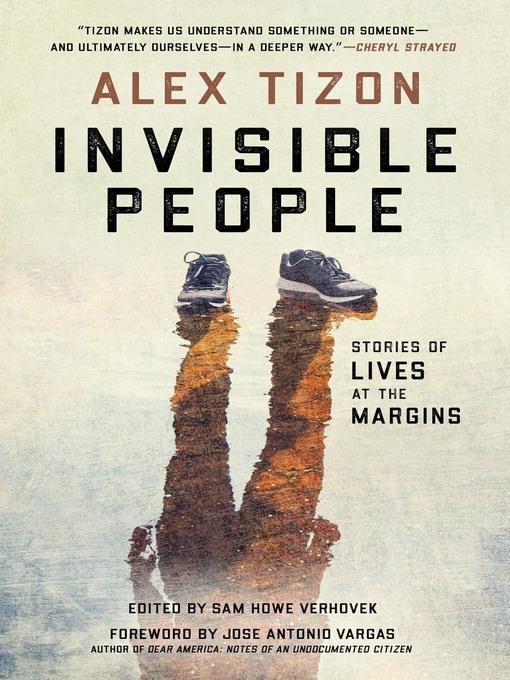
Invisible People
Stories of Lives at the Margins
کتاب های مرتبط
- اطلاعات
- نقد و بررسی
- دیدگاه کاربران
نقد و بررسی

August 19, 2019
This collection of pieces by the late Pulitzer Prize–winning journalist Tizon
(Little Big Man) is both an introduction to his work and a heartfelt tribute by friends and colleagues, who contribute introductions to each article. Standouts include a profile of a Hurricane Katrina refugee who started a new life in Alaska; an entry on the post-9/11 experiences of the only Muslim family in Sheridan, Wyo.; a story about the historical court of inquiry that overturned the 1858 murder conviction of Chief Leschi, the last leader of the Nisqually Indians; and the controversial posthumous Atlantic article for which Tizon (1959–2017) is probably best known, “My Family’s Slave.” It tells the story of Eudocia Tomas Pulido, a Filipina woman who spent her life caring for the author’s mother and her family after having been pressed into involuntary servitude as a young girl, eulogizing her and considering his own youthful complicity in her exploitation. Given that it’s a celebration of Tizon’s work, the collection highlights the praise the piece received and nearly ignores the controversy. Despite that, both longtime fans and those relatively new to Tizon’s work will come away from this collection with an appreciation for his unquestionable ability to narrate unusual stories in memorable ways.

September 15, 2019
Pulitzer Prize-winning journalist Tizon (Big Little Man: In Search of My Asian Self, 2014) honors undersung lives in a posthumously published collection. As a reporter, Tizon (1959-2017) gravitated toward misfits, eccentrics, and outsiders, all of whom he treats with acute sensitivity in this roundup of articles originally published between 1994 and 2017. Two autobiographical pieces form the book's moral center: an excerpt from his memoir of being Filipino American and the bittersweet June 2017 Atlantic cover story, "My Family's Slave," a loving portrait of a woman who worked for his family as a de facto indentured servant. The other entries consist of newspaper articles demonstrating the wide range of Tizon's sympathies, rooted in his belief that everyone has an "epic story" to tell. This thread ran through all his stories, whether he was writing about the only Muslim family in a Wyoming town after 9/11 or the descendants of a chief of the Nisqually tribe who fought to exonerate an ancestor they saw as unjustly hanged by the authorities. Most of the author's subjects exemplify broader cultural issues, none more heartbreakingly than the story of a Cambodian widow who saw her parents killed by Khmer Rouge soldiers, which reveals both her implacable grief and American psychiatrists' lack of preparation for dealing with trauma of that magnitude. More upbeat pieces include "Onward Christian Surfers," about missionaries on Waikiki Beach, and a profile of "a full-time UFO investigator and possessor of one of the world's most comprehensive, though unofficial UFO databases." Skillfully chosen by Verhovek, all of the pieces have brief introductions by fellow journalists or others. The collection lacks the articles for which Tizon shared a Pulitzer with two Seattle Times co-workers, but they remain available on the paper's website, and many people will want to seek them out after reading this book. A memorable collection that shows how much journalism lost with the early death of one of its finest.
COPYRIGHT(2019) Kirkus Reviews, ALL RIGHTS RESERVED.

























دیدگاه کاربران